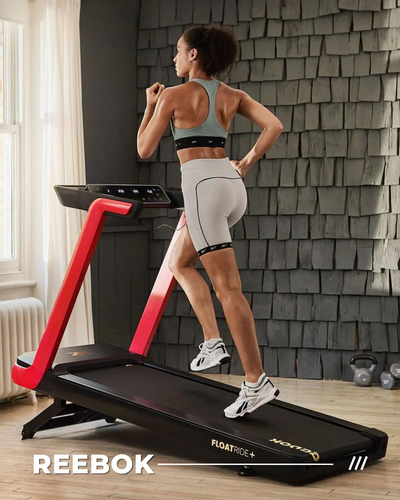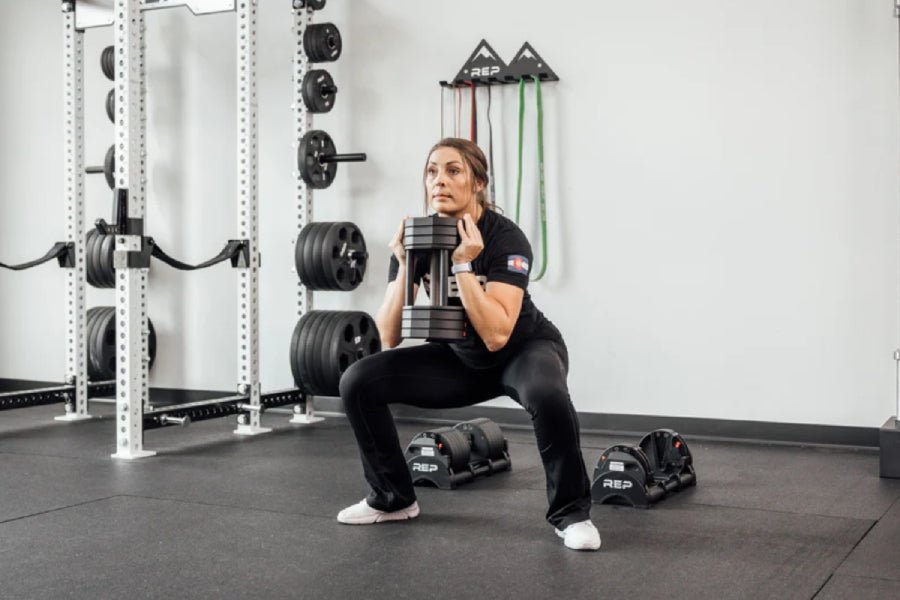How To Maintain Your Portable Treadmill For Longevity
GYMSPORTZ PTE LTD | 3 Nov 2025

A portable treadmill is a convenient and efficient way to maintain your fitness routine for home fitness or in smaller living spaces. However, like any piece of exercise equipment, it requires regular maintenance to ensure smooth performance and a long lifespan. Neglecting simple upkeep tasks can lead to increased wear and tear, noisier operation, and even costly repairs down the road. By developing a consistent care routine, you can keep your treadmill running like new for years to come.
Keep The Treadmill Clean And Dust-Free
Dust, sweat, and debris can quickly accumulate on your treadmill, especially if you use it frequently. These particles can get into the motor housing and belt system, affecting the machine’s performance and durability. Make it a habit to wipe down your treadmill after every use with a soft, dry cloth. For deeper cleaning, unplug the unit and use a damp cloth with mild soap to remove sweat residue and grime from the handles and console.
Pay particular attention to the belt area. Dirt can cause friction between the belt and deck, reducing efficiency and causing unnecessary strain on the motor. You can also use a vacuum cleaner with a narrow attachment to remove dust from under the treadmill and around the motor cover. A clean treadmill not only runs smoother but also prevents overheating.
Lubricate The Belt Regularly
Lubrication is one of the most essential maintenance tasks for any treadmill. The belt and deck need proper lubrication to minimise friction and ensure smooth motion. Without it, the motor has to work harder, which can lead to premature wear and higher energy consumption.
Most treadmills, including compact or foldable models, require lubrication every three to six months, depending on usage. Always check the manufacturer’s manual for specific instructions, as some models come with pre-lubricated belts. When applying lubricant, lift the belt slightly and apply the lubricant evenly along the centre of the deck. After application, walk slowly on the treadmill for a few minutes to distribute the lubricant evenly.
Check The Belt Alignment And Tension
A misaligned or overly tight belt can cause uneven wear and affect your treadmill’s overall performance. If you notice that the belt drifts to one side while in use, it may need realignment. Most treadmills have adjustment bolts at the rear that allow you to centre the belt. Turn the bolts slightly, usually a quarter turn at a time, until the belt runs smoothly in the middle.
Belt tension is equally important. If the belt feels loose or slips during use, tighten it gradually. Conversely, if it feels too tight, loosen it to avoid putting extra strain on the motor and rollers. You should be able to lift the belt around 5–7 cm off the deck in the centre without resistance.
Inspect The Power Cord And Connections
Your treadmill’s electrical components should always be in good condition to prevent malfunctions and safety hazards. Periodically check the power cord for fraying, exposed wires, or bends that could lead to short circuits. Ensure the plug fits securely into the socket, and avoid using extension cords that may not handle the treadmill’s power requirements.
It is also a good idea to unplug the treadmill when not in use, especially during thunderstorms. This prevents electrical surges from damaging the motor or console. Some users connect their treadmill to a surge protector for extra safety.
Monitor The Motor And Roller Function
The motor is the heart of your treadmill, and taking care of it ensures long-term reliability. Listen for any unusual noises such as grinding, knocking, or squealing while the treadmill is running. These sounds may indicate worn bearings or debris trapped inside. If you are comfortable with basic maintenance, you can remove the motor cover and gently vacuum the interior to keep it free from dust.
Similarly, check that the rollers located at the front and rear of the belt are rotating smoothly. Irregular movement or excessive noise can be signs of worn bearings or misalignment. Addressing these issues early prevents further mechanical damage and ensures a quieter workout experience.
Keep The Machine On A Stable Surface
A stable surface is vital for the proper functioning of your treadmill. Uneven flooring can cause vibrations, affect balance, and even damage the internal components over time. Always place your treadmill on a level surface and use a treadmill mat underneath to reduce noise, absorb impact, and protect your flooring.
A mat also helps prevent dust from being drawn into the machine from below, which is especially beneficial if your treadmill is placed on carpeted flooring. This simple addition can significantly extend the machine’s lifespan while improving user comfort.
Tighten Bolts And Check For Loose Parts
Frequent use and vibration can gradually loosen screws, bolts, and nuts across the treadmill’s frame. Regularly inspect all visible joints and connections, tightening any parts that seem loose. Pay close attention to the handrails, console mounts, and base frame.
Loose parts can cause rattling noises, instability, or even accidents if ignored. Keeping everything secure ensures a safe and stable running experience every time you use your treadmill.
Keep Software And Console Updated
Modern treadmills often come with digital displays or Bluetooth connectivity that track speed, distance, and heart rate. Some even have companion apps for workout tracking. Check periodically if your treadmill’s software or app needs updates. Manufacturers may release updates that improve performance, accuracy, or safety features.
If your treadmill uses a touchscreen or console with buttons, make sure to keep it clean and free of moisture to prevent malfunction. Avoid using harsh chemicals or excessive water when cleaning electronic components.
Store The Treadmill Properly When Not In Use
For those who own a foldable or portable treadmill, proper storage is just as important as regular maintenance. Always fold and store the treadmill according to the manufacturer’s instructions. Avoid placing it in humid or dusty environments, as moisture can corrode internal components and dust can accumulate in moving parts.
If you need to move the treadmill, do so carefully using the built-in transport wheels. Avoid dragging it across rough surfaces, as this could damage the frame or wheels. Storing your treadmill correctly ensures it remains in good condition and ready for use whenever you need it.
Schedule Professional Servicing When Needed
Even with diligent maintenance, some components will eventually wear out. It’s wise to schedule a professional service at least once a year to have an expert inspect the motor, electronics, and internal mechanisms. This helps identify potential issues before they become serious problems.
Professionals can also recalibrate the speed sensors, replace worn parts, and ensure the treadmill operates safely. A small investment in annual servicing can go a long way in extending your treadmill’s overall lifespan.
Conclusion
A well-maintained treadmill can serve you reliably for years, offering consistent performance and safe workouts. By cleaning it regularly, keeping it lubricated, checking its alignment, and ensuring proper storage, you protect your investment and improve your exercise experience.
If you’re looking for durable, high-quality fitness equipment, explore the range of treadmills and accessories available at Gymsportz. With the right care and maintenance, your treadmill will continue to support your fitness goals for the long run.







